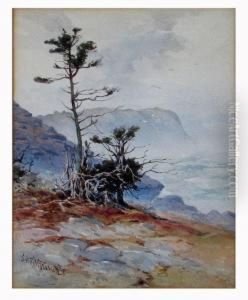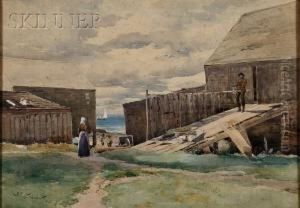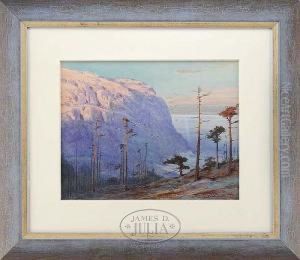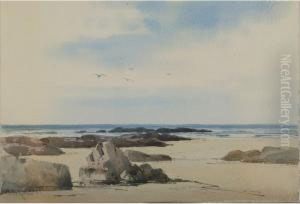Samuel Peter Rolt Triscott Paintings
Samuel Peter Rolt Triscott, an English-born American painter, is best known for his watercolor landscapes that intricately capture the essence of New England's coasts, mountains, and rural settings. Born on January 4, 1846, in Gosport, England, Triscott's journey into the art world was not immediate. Initially embarking on a career in engineering, his passion for painting soon took precedence, leading him to a path that would establish him as a significant figure in the American watercolor movement of the late 19th and early 20th centuries.
Triscott received his formal art education in London, where he studied under notable figures of the time. However, it was his move to the United States, and specifically to Boston, Massachusetts, in the early 1870s, that marked the beginning of his serious pursuit of art. Boston, with its vibrant art scene and community, provided the perfect backdrop for Triscott to develop his artistic skills and voice. He quickly became associated with the Boston Art Club, where he exhibited regularly, gaining recognition and acclaim for his work.
In 1881, Triscott made a significant move to Monhegan Island, Maine, a place that would serve as a major source of inspiration for much of his work. The rugged beauty of the island, with its dramatic cliffs, serene landscapes, and the ever-changing sea, became a recurring theme in Triscott's paintings. His ability to capture the subtle nuances of light and color, especially in his depictions of water, set him apart from his contemporaries and endeared his work to collectors and the public alike.
Throughout his career, Triscott remained dedicated to the watercolor medium, mastering its challenges and exploiting its potential to convey mood and atmosphere. His contributions to the field were recognized by his peers, leading to his election as a member of the prestigious American Watercolor Society, an acknowledgment of his skill and influence in the art world.
Samuel Peter Rolt Triscott's legacy is one of dedication to the beauty of the American landscape, particularly that of New England. His works continue to be celebrated for their technical skill, emotional depth, and the artist's unique ability to connect viewers with the serene and sublime aspects of nature. Triscott passed away on July 15, 1925, in Portland, Maine, but his influence on the American art scene, and particularly on the development and appreciation of watercolor painting, endures.
















